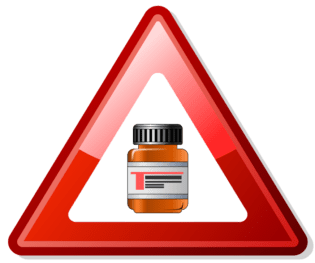Do you know what kind of drugs dentists use on patients?

In dentistry, antibiotics are often prescribed by dentists for prophylactic use before and after a surgery such as extraction of tooth and implantation. Dentists prescribe a large portion of all oral antibiotics, yet, have you ever thought about the adverse drug reactions (ADRs) before you take the medicine?

ADRs do not solely include hypersensitivity to the drugs, but more reactions than you can imagine!
Here comes an article (Thornhill et al., 2019) to help you understand the ADRs may occur after taking antibiotics prescribed by dentists. In the study, NHS Digital Prescribing data and Yellow Card Drug Analysis data between 2010 and 2017 were abstracted to quantify dental antibiotic prescribing in England, and the rate and types of ADRs associated with them.
Amoxicillin was the most frequently prescribed and accounted for 64.8% of all dental oral antibiotic prescriptions. Metronidazole was the next-most frequently prescribed antibiotic. These were followed by erythromycin, penicillin V, clindamycin, amoxicillin + clavulanic acid, cephalosporins, tetracyclines, clarithromycin, and azithromycin.
Among oral antibiotics commonly prescribed by dentists, clindamycin had the highest fatal, serious, and overall ADR rates. This was more than twice that any of other commonly used dental antibiotic and >15 times higher than amoxicillin, the most widely used antibiotic, which had the lowest fatal, serious, and overall ADR rates.
Of the penicillins, penicillin V had an overall serious and fatal ADR rate more than 4 times that amoxicillin. Amoxicillin + clavulanic acid had an overall serious ADR rate>3 times that amoxicillin. Perhaps most concerning, however, amoxicillin + clavulanic acid had the highest fatal ADR rate among penicillins, which was only second to clindamycin.
Clindamycin had the highest fatal ADR rate. All fatal reactions were related to infection or gastrointestinal problems, mostly related to Clostridiodes difficile infection. These also accounted for a significant proportion of all clindamycin-related ADRs. Skin reactions, however, accounted for a majority of nonfatal clindamycin ADRs, and of them, the majority were allergic rashes or pruritus.
Some of the most used drugs
Penicillins are one of the most prescribed antibiotics by dentists. It has the capacity to induce hypersensitivity reaction that can also lead to serious and fatal skin reactions.
Moving on, we have Amoxicillin, which is the safest and particularly for people who have no history of penicillin allergy. It is safe for both treatment and prophylaxis and it may be safer than penicillin V and amoxicillin + clavulanic acid.
Other than these two, we also have Clarithromycin and Clindamycin. The former is more likely to cause gastrointestinal upset than erythromycin and the latter is the worst of oral antibiotics because its ADRs includes fatal ones!
Now you know…
Rank from least to most likely to cause an ADR, antibiotics most commonly prescribed by dentists were as follow:
Amoxicillin < Cephalosporins < Erythromycin < Tetracyclines < Azithromycin < Metronidazole < Amoxicillin + Clavulanic acid < Clarithromycin < Penicillin V < Clindamycin.
This blog entry was written by TZU-HAN LIN, HSUN-WEN LIU, KING SHUEN JUDY YIM, YUN-YUN YU, 2nd year Dentistry Students in Pharmacology at University CEU Cardenal Herrera.
References
Thornhill, M., Dayer, M., Durkin, M., Lockhart, P. and Baddour, L. (2019). Risk of Adverse Reactions to Oral Antibiotics Prescribed by Dentists. Journal of Dental Research, 98(10), pp.1081-1087.












